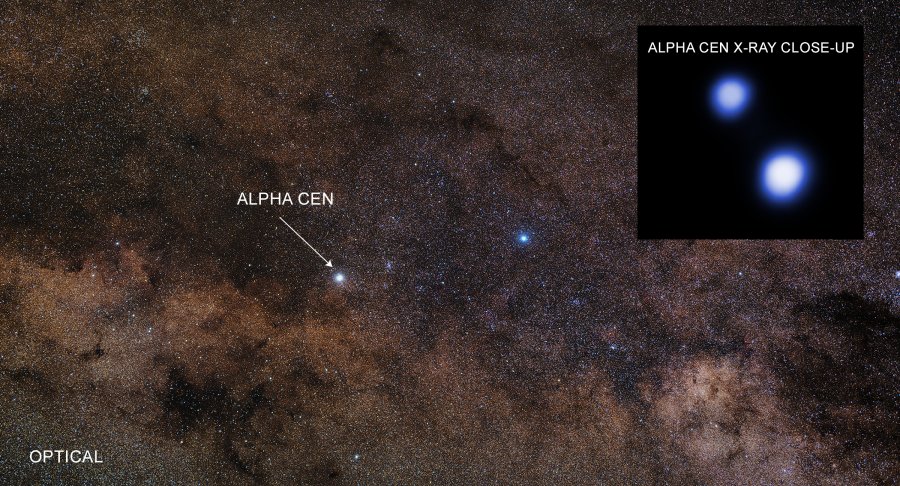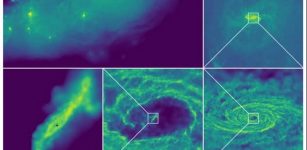Second Nearest Star System May Offer Conditions For Life ‘As We Know It’
MessageToEagle.com – A new study that has involved monitoring of Alpha Centauri for more than a decade by NASA’s Chandra X-ray Observatory, indicates that any planets orbiting the two brightest stars in the Alpha Cen system are likely not being pummeled by large amounts of X-ray radiation from their host stars.
This discovery provides encouraging news about one key aspect of planetary habitability.

X-rays and related space weather effects are dangerous for unprotected life, directly through high radiation doses and indirectly through stripping away planetary atmospheres.
Alpha Centauri is a triple star system located just over four light years, or about 25 trillion miles, from Earth.
“Because it is relatively close, the Alpha Centauri system is seen by many as the best candidate to explore for signs of life,” said Tom Ayres of the University of Colorado Boulder.
“The question is, will we find planets in an environment conducive to life as we know it?”
The stars in the Alpha Centauri system include a pair called “A” and “B,” (AB for short) which orbit relatively close to each other. Alpha Cen A is a near twin of our Sun in almost every way, including age, while Alpha Cen B is somewhat smaller and dimmer but still quite similar to the Sun.
Proxima currently holds the title of the nearest star to Earth, although AB is a very close second.
The Chandra data reveal that the prospects for life in terms of current X-ray bombardment are actually better around Alpha Cen A than for the Sun, and Alpha Cen B fares only slightly worse. Proxima, on the other hand, is a type of active red dwarf star known to frequently send out dangerous flares of X-ray radiation, and is likely hostile to life.
Ayres said that “this is very good news for Alpha Cen AB in terms of the ability of possible life on any of their planets to survive radiation bouts from the stars,” said Ayres. “Chandra shows us that life should have a fighting chance on planets around either of these stars.”
While one remarkable Earth-size planet has been discovered around Proxima, astronomers continue to search, without success, for exoplanets around Alpha Cen A and B.
Long-term measurements have captured the complete ups and downs of the X-ray activity of AB, analogous to the Sun’s 11-year sunspot cycle. They show that any planets in the habitable zone for A would receive a lower dose of X-rays, on average, than similar planets around the Sun. For companion B the X-ray dose for habitable zone planets is higher than for the Sun, but only by a factor of about five.
In comparison planets in the habitable zone around Proxima receive an average dose of X-rays about 500 times larger than the Earth, and 50,000 times larger during a big flare.
MessageToEagle.com










